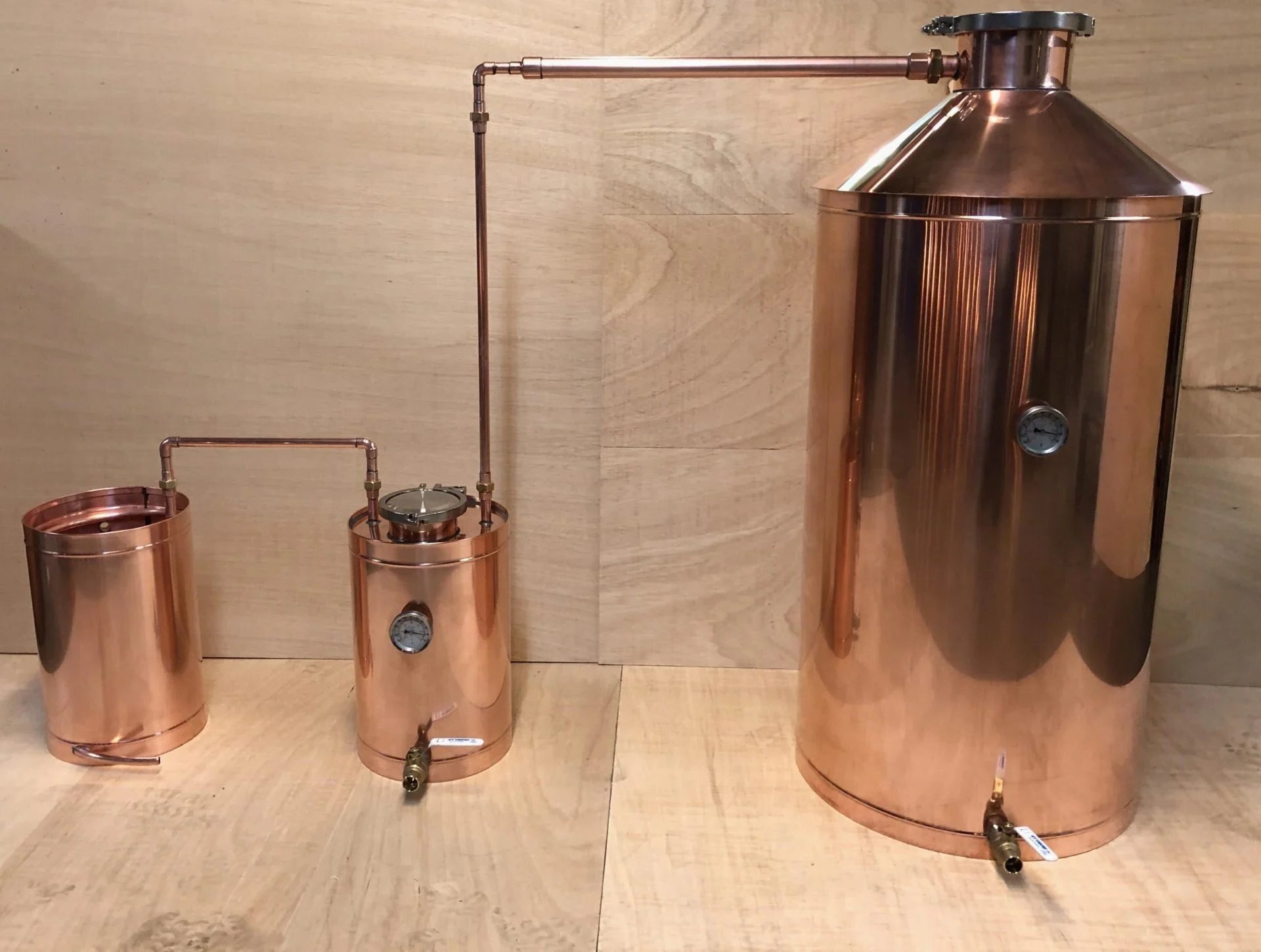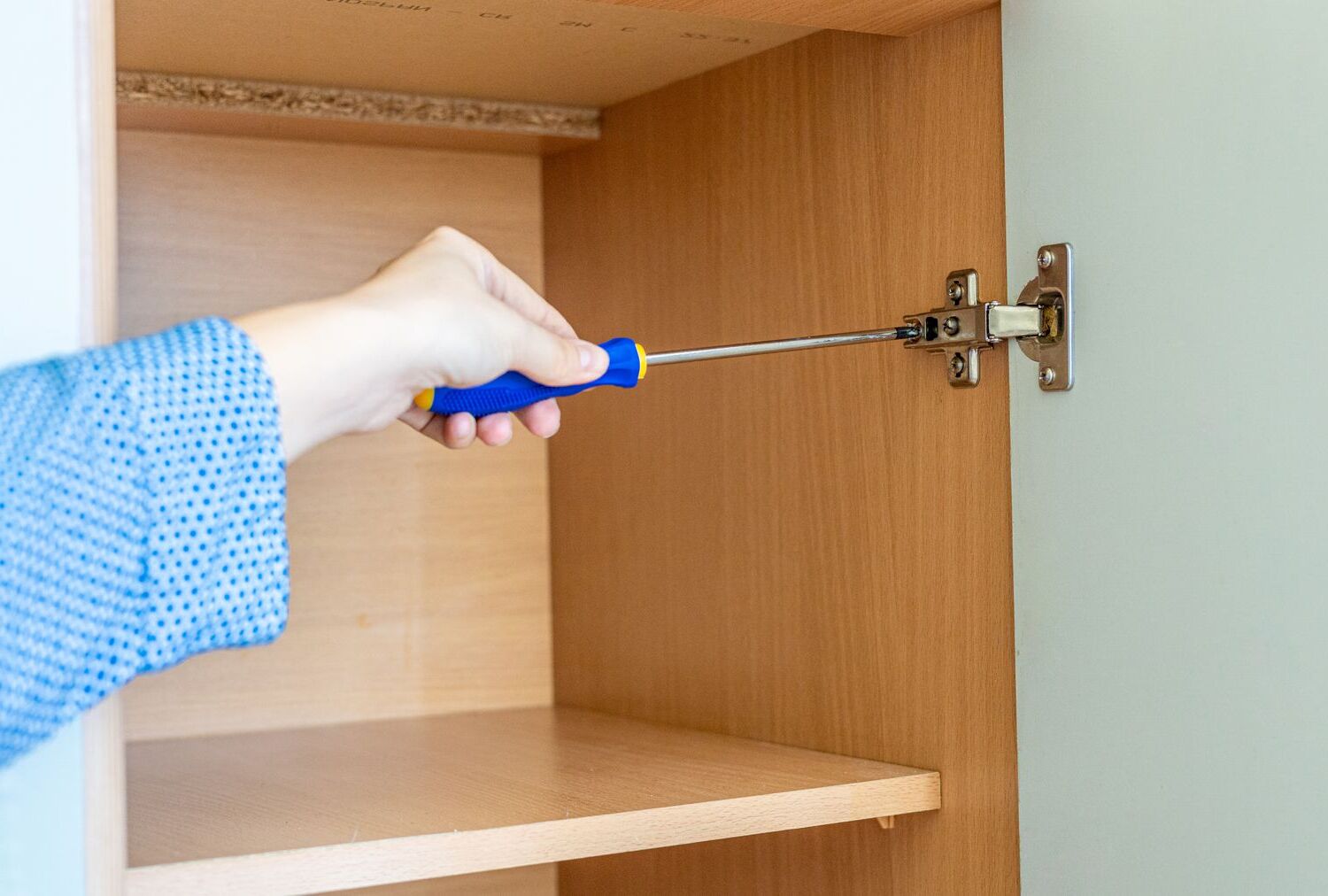Home>Create & Decorate>DIY & Crafts>How To Make A Still For Moonshine


DIY & Crafts
How To Make A Still For Moonshine
Published: February 23, 2024

Content Creator specializing in woodworking and interior transformations. Caegan's guides motivate readers to undertake their own projects, while his custom furniture adds a personal touch.
Learn how to make a DIY moonshine still with our step-by-step guide. Perfect for craft enthusiasts and DIY lovers. Start your moonshine adventure today!
(Many of the links in this article redirect to a specific reviewed product. Your purchase of these products through affiliate links helps to generate commission for Twigandthistle.com, at no extra cost. Learn more)
Introduction
Making your own moonshine can be a fascinating and rewarding endeavor. Whether you're a hobbyist looking to craft small batches of artisanal spirits or simply intrigued by the process, building a still for moonshine is an essential step in the journey. A still, at its core, is a device used to distill liquids, separating components based on their different boiling points. In the context of moonshine production, a still is employed to extract the alcohol from a fermented mash, resulting in a potent and flavorful spirit.
Crafting your own still allows for a hands-on approach to the distillation process, providing a deeper understanding of the art and science behind moonshine production. While the task may seem daunting at first, with the right guidance and a bit of patience, you can construct a simple yet effective still using readily available materials.
In this guide, we will walk through the step-by-step process of building a basic pot still for moonshine. From gathering the necessary materials and tools to assembling the components and conducting a test run, you will gain valuable insights into the construction and operation of a homemade still. By following these instructions, you can embark on a captivating journey into the world of DIY distillation, unlocking the potential to create your own signature moonshine with a personal touch.
As we delve into the intricacies of building a still, it's important to approach this endeavor with a curious and adventurous spirit. Embracing the craftsmanship and ingenuity involved in creating a functional still can be immensely gratifying, leading to a newfound appreciation for the art of distillation. So, roll up your sleeves, gather your supplies, and let's embark on this captivating DIY adventure to construct a still for crafting your very own moonshine.
Read more: How To Make A Still
Materials and Tools Needed
To embark on the journey of constructing a still for moonshine, you will need a selection of materials and tools to bring your vision to life. Here's a comprehensive list of the essential items required for this DIY project:
Materials:
-
Large Stock Pot: The foundation of your still, the stock pot will serve as the boiling vessel for the fermented mash. Opt for a stainless steel pot with a capacity suitable for your intended batch size.
-
Copper Tubing: This will be used to create the condenser, facilitating the cooling and condensation of the alcohol vapors. Select high-quality, food-grade copper tubing for optimal performance.
-
Copper Pipe: Utilized for constructing the column of the still, the copper pipe plays a crucial role in guiding the vapor through the distillation process. Ensure that the pipe is of sufficient length and diameter to accommodate the desired output.
-
Copper Fittings and Adapters: These components are essential for connecting the various sections of the still, ensuring a secure and efficient assembly.
-
Thermometer: A reliable thermometer is indispensable for monitoring the temperature during the distillation process, enabling precise control over the heat source.
-
Teflon Tape: This will be used to seal the threaded connections, preventing any potential leaks in the apparatus.
-
Ice: To facilitate the condensation process, a steady supply of ice will be required to cool the copper tubing and condense the alcohol vapors.
-
Distiller's Yeast: If you plan to ferment your own mash, high-quality distiller's yeast is essential for the fermentation process, converting sugars into alcohol.
-
Water: Distillation requires a consistent supply of cold water for the condenser, so ensure access to a reliable source of water during the operation of the still.
Tools:
-
Drill with Metal Drill Bits: Essential for creating openings in the stock pot and copper pipe to accommodate fittings and connections.
-
Hacksaw or Pipe Cutter: To cut the copper tubing and pipe to the required lengths for the condenser and column.
-
Propane Burner or Electric Stove: A heat source is necessary for boiling the fermented mash and initiating the distillation process.
-
Pliers and Wrenches: These tools will be used to tighten and secure the fittings and connections, ensuring a stable and leak-free assembly.
-
Sandpaper or Emery Cloth: To smooth the edges of the copper tubing and pipe after cutting, facilitating a snug fit for the fittings.
-
Bucket or Basin: For collecting the distilled alcohol as it exits the condenser.
By gathering these materials and tools, you will be well-equipped to commence the construction of your homemade still for moonshine. With careful attention to detail and a methodical approach, you can transform these basic components into a functional and efficient distillation apparatus, setting the stage for the captivating process of crafting your own moonshine.
Step 1: Building the Pot
The first crucial step in constructing a still for moonshine involves creating the pot, which serves as the primary vessel for boiling the fermented mash. The pot, typically a large stock pot, forms the foundation of the still and plays a pivotal role in initiating the distillation process. Here's a detailed guide on building the pot for your homemade moonshine still:
Read more: How to Build a Lattice Door Under Your Deck
1. Selecting the Stock Pot
Begin by choosing a durable and appropriately sized stock pot to accommodate your batch size. Opt for a stainless steel pot with a capacity that aligns with your production goals. Ensure that the pot features a tight-fitting lid to facilitate the containment of alcohol vapors during the distillation process.
2. Creating Openings
Using a drill fitted with metal drill bits, carefully create openings in the stock pot to accommodate the necessary fittings and connections. These openings will serve as entry and exit points for the copper tubing and thermometer, enabling the seamless integration of essential components.
3. Installing the Fittings
Once the openings are in place, proceed to install the copper fittings and adapters to facilitate the attachment of the condenser and thermometer. Apply Teflon tape to the threaded connections to ensure a secure and leak-free seal, enhancing the overall functionality of the pot.
4. Securing the Thermometer
With the fittings in position, carefully attach the thermometer to the designated opening in the stock pot. Ensure that the thermometer is securely fastened, providing accurate temperature readings throughout the distillation process.
Read more: Small Bathroom DIY Ideas
5. Sealing the Connections
Prior to use, inspect the connections and fittings to verify that they are tightly secured and properly sealed. Any potential leaks should be addressed promptly to maintain the integrity of the pot and optimize the distillation process.
By meticulously following these steps, you can effectively build the pot for your moonshine still, laying the groundwork for the subsequent assembly of the condenser and column. With attention to detail and precision in the construction of the pot, you are poised to embark on the next phase of creating a fully functional still for distilling your own moonshine.
Step 2: Assembling the Condenser
The condenser is a critical component of the moonshine still, playing a pivotal role in the distillation process by facilitating the cooling and condensation of alcohol vapors. Assembling the condenser requires careful attention to detail and precision to ensure optimal performance and efficiency. Here's a comprehensive guide on the step-by-step process of constructing and assembling the condenser for your homemade moonshine still:
1. Cutting the Copper Tubing
Begin by measuring and cutting a length of high-quality copper tubing to serve as the primary material for the condenser. The length of the tubing will depend on the specific design and dimensions of your still, with considerations for the desired cooling capacity and condensation efficiency. Use a hacksaw or pipe cutter to achieve clean and precise cuts, ensuring that the tubing is free from any irregularities that may impede its functionality.
2. Shaping the Coil
Carefully shape the cut copper tubing into a coil configuration, taking care to maintain a consistent and uniform shape throughout the process. The coil serves as the core structure of the condenser, enabling the efficient transfer of heat and the subsequent condensation of alcohol vapors. Ensure that the coil is free from kinks or bends that could obstruct the flow of vapor and impede the cooling process.
3. Attaching the Inlet and Outlet
Once the coil is formed, affix fittings to the inlet and outlet ends of the tubing to facilitate the connection to the pot and the collection vessel, respectively. Secure the fittings with precision, ensuring a snug and leak-free attachment to guarantee the seamless flow of vapor through the condenser. The inlet will receive the alcohol vapors from the pot, while the outlet will channel the condensed liquid into the collection vessel.
4. Connecting the Condenser to the Pot
With the coil and fittings in place, carefully connect the condenser to the designated opening in the stock pot, aligning the inlet with the vapor outlet of the pot. Utilize pliers and wrenches to tighten the connections, ensuring a secure and stable attachment that promotes the efficient transfer of vapor from the pot to the condenser.
5. Testing for Leaks
Before proceeding with the distillation process, conduct a thorough inspection of the condenser to verify that all connections are tightly secured and free from leaks. Any potential leaks should be promptly addressed to maintain the integrity and functionality of the condenser, safeguarding the effectiveness of the distillation process.
By meticulously following these steps, you can successfully assemble the condenser for your moonshine still, setting the stage for the culmination of the construction process and the commencement of the captivating journey into the art of distillation. With a well-constructed condenser in place, you are primed to harness the transformative power of heat and vapor, unlocking the potential to craft your own signature moonshine with precision and finesse.
Step 3: Attaching the Thermometer
Attaching the thermometer to the still is a crucial step in the construction process, as it enables precise temperature monitoring during the distillation of moonshine. The thermometer plays a pivotal role in ensuring that the distillation process occurs within the optimal temperature range, allowing for the separation of alcohol from the fermented mash with precision and efficiency.
To effectively attach the thermometer to the still, begin by carefully selecting a suitable location on the stock pot for its placement. The chosen spot should allow for easy visibility and accessibility while ensuring that the thermometer is securely positioned to provide accurate temperature readings throughout the distillation process.
Once the ideal location is determined, create an opening in the designated area using a drill fitted with a metal drill bit. Exercise caution and precision during this step to achieve a clean and appropriately sized opening that accommodates the thermometer's mounting mechanism.
With the opening in place, proceed to insert the thermometer into the designated spot on the stock pot, ensuring a snug and secure fit. Depending on the type of thermometer being used, it may feature a threaded connection that requires the application of Teflon tape to seal the attachment and prevent potential leaks.
Carefully fasten the thermometer in position, verifying that it is firmly secured and aligned for easy readability. The thermometer should be positioned in such a way that it remains immersed in the vapor space of the pot during the distillation process, providing accurate temperature readings that guide the regulation of heat for optimal distillation.
After attaching the thermometer, conduct a thorough inspection to confirm that the connection is tight and leak-free. It is essential to verify the stability and functionality of the thermometer, as any irregularities in its attachment could compromise the accuracy of temperature monitoring during the distillation process.
By meticulously following these steps, you can effectively attach the thermometer to the still, empowering you with the ability to monitor and regulate the temperature with precision as you embark on the captivating journey of distilling your own moonshine. With the thermometer securely in place, you are poised to harness the transformative power of heat and vapor, unlocking the potential to craft your own signature moonshine with confidence and control.
Step 4: Testing the Still
Once the construction of the moonshine still is complete, it is essential to conduct a thorough testing process to ensure its functionality and efficiency before commencing the actual distillation of spirits. Testing the still allows for the identification of any potential issues or irregularities, providing an opportunity to make necessary adjustments and optimizations prior to engaging in the production of moonshine.
1. Leak Inspection
Begin the testing process by carefully inspecting all connections, fittings, and seals for any signs of leakage. It is crucial to meticulously examine the entire apparatus, including the pot, condenser, and thermometer, to verify that each component is securely fastened and free from any leaks that could compromise the distillation process.
2. Water Run
Prior to introducing the fermented mash into the pot, conduct a water run to simulate the distillation process and assess the functionality of the still. Fill the pot with water and initiate the heating process, allowing the water to boil and produce vapor that travels through the condenser. This step enables the evaluation of the condensation efficiency and the overall performance of the apparatus.
3. Temperature Monitoring
Throughout the water run, closely monitor the temperature indicated by the thermometer to ensure that it aligns with the expected range for distillation. The ability of the thermometer to provide accurate readings is essential for regulating the heat source and achieving optimal distillation conditions.
Read more: How to Soundproof a Door
4. Condensation Assessment
Observe the condensation process within the condenser to ascertain the effectiveness of cooling and the conversion of vapor into liquid. The condenser should efficiently transform the vapor into a liquid state, demonstrating its capacity to facilitate the separation of alcohol from the vapor stream.
5. Leak Resolution
If any leaks or irregularities are detected during the testing process, promptly address them by tightening connections, replacing seals, or making necessary adjustments to enhance the integrity of the still. It is imperative to rectify any issues to ensure the smooth operation of the apparatus during actual distillation.
By meticulously conducting these testing procedures, you can validate the functionality and reliability of the moonshine still, laying the groundwork for a successful and rewarding distillation experience. The testing phase serves as a crucial preparatory step, allowing you to fine-tune the apparatus and address any potential concerns before embarking on the captivating journey of crafting your own moonshine with confidence and precision.
Conclusion
In conclusion, the process of constructing a still for moonshine is a captivating and rewarding endeavor that combines craftsmanship, ingenuity, and a deep appreciation for the art of distillation. From the initial gathering of materials and tools to the meticulous assembly of the pot, condenser, and thermometer, each step in the construction process contributes to the creation of a functional and efficient apparatus for producing homemade moonshine.
As the final pieces of the still come together, the testing phase serves as a critical checkpoint, allowing for the validation of the apparatus's functionality and the resolution of any potential issues before embarking on the actual distillation process. Through careful inspection, water runs, and temperature monitoring, the testing phase provides invaluable insights into the performance of the still, ensuring that it is primed for the production of high-quality moonshine.
With the construction and testing phases successfully completed, the homemade moonshine still stands as a testament to the fusion of tradition and innovation, offering a gateway to the captivating world of artisanal distillation. The craftsmanship and attention to detail invested in the construction process culminate in a versatile and reliable apparatus that empowers enthusiasts to explore the nuances of distillation and create their own signature spirits with precision and finesse.
Beyond the technical aspects, the journey of building a still for moonshine embodies a spirit of exploration and discovery, inviting individuals to delve into the rich heritage of distillation while embracing the creative freedom to experiment with flavors and techniques. The process fosters a deep connection to the art of crafting spirits, fostering a sense of pride and accomplishment as enthusiasts witness the transformation of raw ingredients into a refined and flavorful libation.
As the still comes to life and the first drops of moonshine trickle into the collection vessel, a sense of fulfillment and anticipation permeates the air, marking the beginning of a new chapter in the pursuit of artisanal distillation. The homemade still serves as a conduit for creativity and self-expression, offering a platform for enthusiasts to share their crafted spirits with friends and family, fostering a sense of community and camaraderie around the art of moonshine production.
In essence, the construction of a still for moonshine transcends the mere assembly of components; it represents a gateway to a world of exploration, creativity, and tradition. With a well-constructed still at hand, enthusiasts are poised to embark on a captivating journey of distillation, unlocking the potential to craft unique and exceptional moonshine that reflects their passion and dedication to the art of artisanal spirits.











